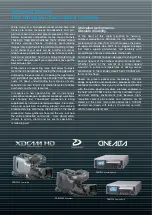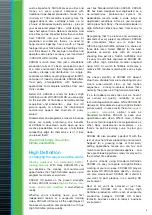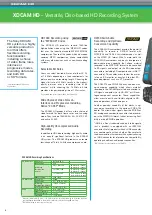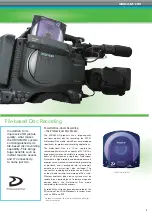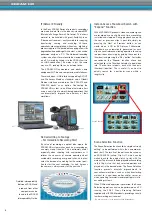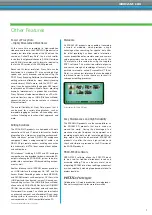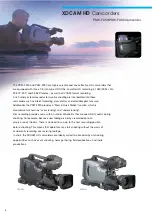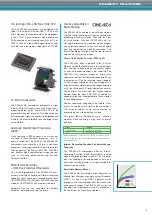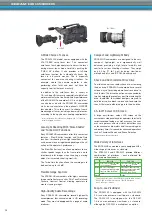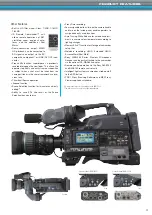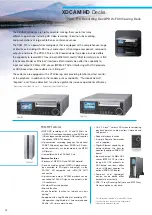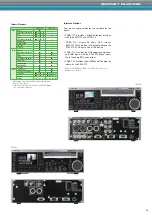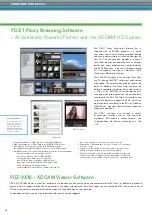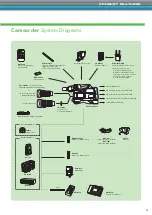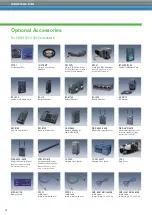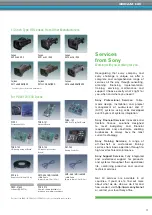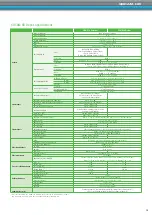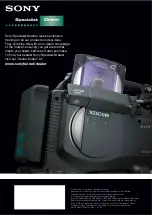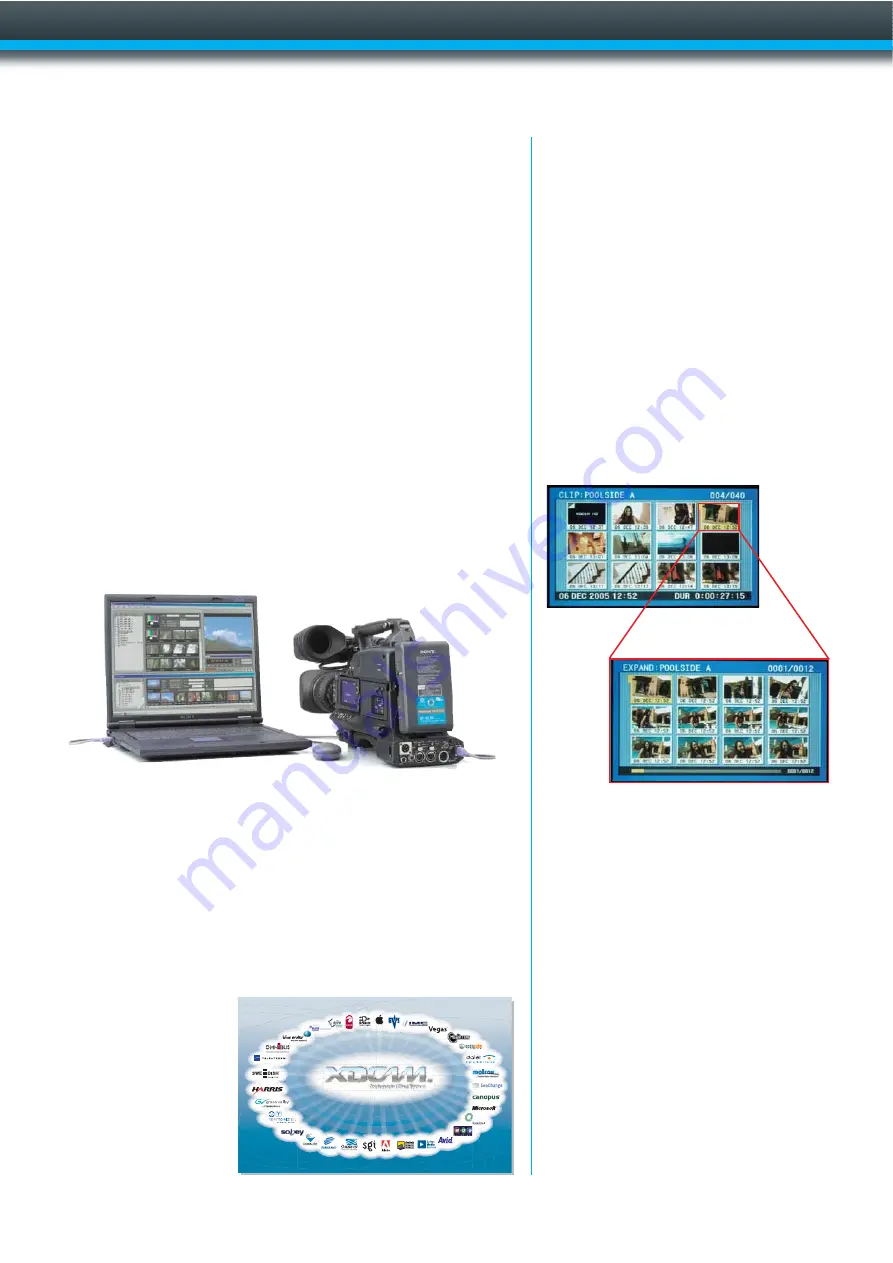
IT/Network Friendly
In the Sony XDCAM Series of products, recordings
are made as data files in the industry-standard MXF
(Material eXchange Format) file format. This allows
material to be handled with great flexibility in an
IT-based environment – easily available for copying,
transferring, sharing, and archiving. All these
operations are accomplished without any “digitising”
process required. File-based data copying allows for
degradation-free dubbing of AV content, which can be
performed easily on a PC. The file-based recording
system also allows for material to be viewed directly
on a PC, simply by linking it to the XDCAM unit via
an i.LINK connection. This works in just the same
way as a PC reading files on an external drive.
The XDCAM HD camcorders and decks come
equipped with IT-friendly, computer-based interfaces.
These include an i.LINK interface supporting DV OUT
and File Access Mode as standard, and a Gibabit
Ethernet interface available on the PDW-F70 and
PDW-F30 decks as an option. Connecting the
XDCAM HD system to an Ethernet network offers
users a new style of network-based operations that
can dramatically improve the efficiency of their
workflows.
No Overwriting to Footage
– For Immediate Recording Start
By virtue of recording on optical disc media, the
XDCAM HD system makes each new recording on
an empty area of the disc. This is extremely useful,
especially when shooting with camcorders, as it
relieves the concerns of camera operators about
accidentally recording over good takes, and elimi-
nates the burden of searching for the correct posi-
tion to start the next recording. In short, it means
the camera is always ready for the next shot!
Instant-Access Thumbnail Search with
“Expand” Function
With all XDCAM HD products, video and audio signals
are recorded as one clip file each time a recording
is started and stopped. During playback, cue-up to
the next or previous clips is possible simply by
pressing the ‘Next’ or ‘Previous’ button, as you
would do on a CD or DVD player. Furthermore,
thumbnails are automatically generated for each
clip as a visual reference, allowing operators to cue-up
to a desired scene simply by guiding the cursor to a
thumbnail and pressing the ‘Play’ button. For further
convenience, the ‘Expand’ function allows one
selected clip in the Thumbnail display to be divided
into 12 even-time intervals, each with their own
thumbnail identifier. This is useful if you want to
quickly search for a particular scene within a
lengthy clip.
Scene Selection Function
The Scene Selection function allows simple cuts-only
editing* to be performed within the camcorder or
deck itself. The results of the edits can be saved as
an XDCAM EDL (called “Clip List”), which can be
written back to the original disc to stay with the
material. The disc can then be played back according
to the Clip List so that only selected portions are
played out in the desired order. The Scene Selection
function presents dramatic improvements to
conventional workflows, such as when transferring
material to a non-linear editor and/or server, or
when searching for material and/or edit points in lin-
ear editing systems.
When GUI-based operation is preferred, the Scene
Selection operation can also be performed on a PC
running the PDZ-1 Proxy Browsing Software
supplied with all XDCAM products, providing a visually
familiar working environment.
*The video and audio of a clip cannot be edited independently.
XDCAM HD
Expand Function
1/10
Detailed interoperability
between XDCAM and
products from other
companies can be
found in the XDCAM
Interoperability Guide.
6


